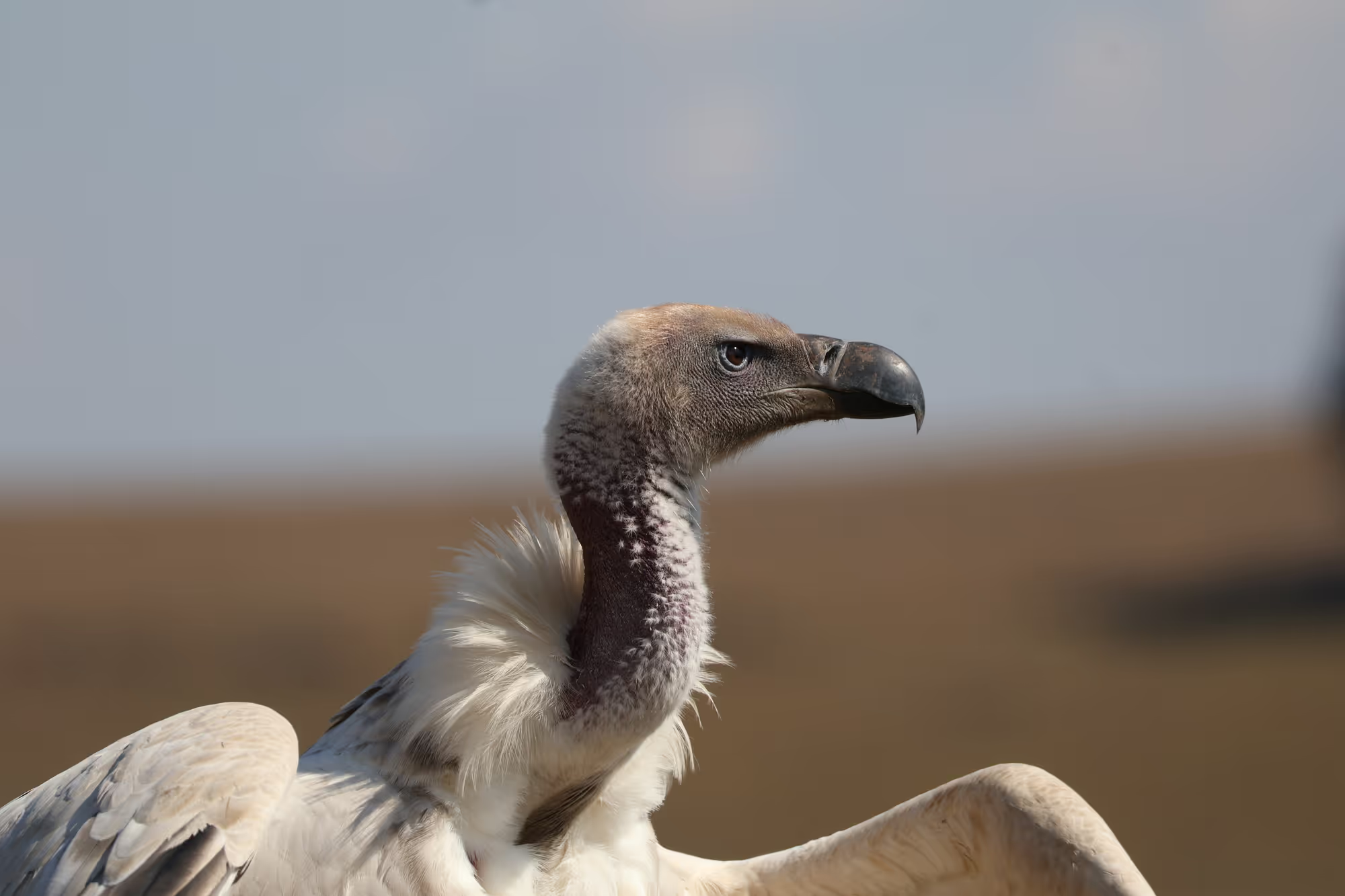There have been several incidents and reports of Vulture poisoning events across the province and region over the past few weeks. After a recent poisoning event in Zululand, KwaZulu-Natal on the 7th June, Vulture populations in the province suffered yet another setback when a second, separate poisoning incident was discovered on the 12th of June. The Zululand Vulture Project, a collaborative partnership between Ezemvelo KZN Wildlife, Wildlife ACT and the Endangered Wildlife Trust, were alerted to the incident. Staff from various organisations responded and were met with the horrific sight of 10 dead Critically Endangered African White-backed Vultures.

The protocol for Vulture poisoning incidents was initiated, which included an extensive sweep of the area both on the ground and by air. This resulted in an additional 5 carcasses being recovered as well as 4 individuals struggling to survive. Immediate first aid treatment was administered to these birds. Unfortunately, two did not respond to treatment and died on the scene, however, the remaining two surviving birds were transported to a registered rehabilitation facility for further treatment.
Of the carcasses recovered, 7 were adult birds, and with the onset of the breeding season, it is likely that these are resident breeding individuals within the Zululand region. This places further stress on an already pressurised population and compounds the impact of last weeks’ Vulture poisoning incident. The importance of this area for Vulture populations is demonstrated through the recent announcement of the Zululand Important Bird and Biodiversity Area (IBA). IBA’s are established in areas with the aim of protecting conservation-important species and habitat. Furthermore, the ecological function that Vultures play within the environment, is continuing to be impacted upon, which will ultimately impact upon human well-being.

"The loss of 27 Critically Endangered Vulture species and 3 Endangered Species in under a week, is devastating for the Zululand Vulture population and exacerbated further by adults not returning to their nesting young", commented Pippa Orpen of Wildlife ACT. "The extinction of Vultures, arguably nature's most important scavengers, would result in dire ecological, economic and human costs, as without Vultures, diseases such as rabies and anthrax would run rampant as carcasses are left to fester in the open", she continued.
ON THE EDGE - Teaser from Sinamatella Productions on Vimeo.
The illegal use of poisons is one of the biggest threats facing Vulture populations across the continent, even more so in the Zululand region. To address this threat, members of the Zululand Vulture Project have been specifically trained to respond to Vulture poisoning events such as this. The purpose of the training is to limit further losses but also to secure evidence, as such events are criminal and the area therefore treated as a crime scene. Once again, members of the South African Police Services responded and a criminal case opened.
"The efficient reaction to the incident resulted in two birds surviving. With Critically Endangered species, each survivor is significant", said Chris Kelly, Species Director of Wildlife ACT.

With the recent news about a mass Vulture poisoning in Botswana, resulting in over 500 birds being poisoned, it is critical that we work even harder across the continent to highlight the plight and importance of Vultures, working together across boundaries and sectors to ensure their survival. It is through strong partnerships with governments, conservation organisations, landowners and members of the public, that we will find success.
Ezemvelo KZN Wildlife, Wildlife ACT and other conservation organisations are working tirelessly to conserve Vulture species throughout KwaZulu-Natal. Various activities include research and monitoring, community awareness and landowner engagement. Unfortunately, Vulture poisoning events such as this are a considerable setback to such endeavours. Members of the public are encouraged to report any illegal activity to their local SAPS or conservation authority.
Photos by Wildlife ACT Monitor Dani Theron



.jpg)
.png)





